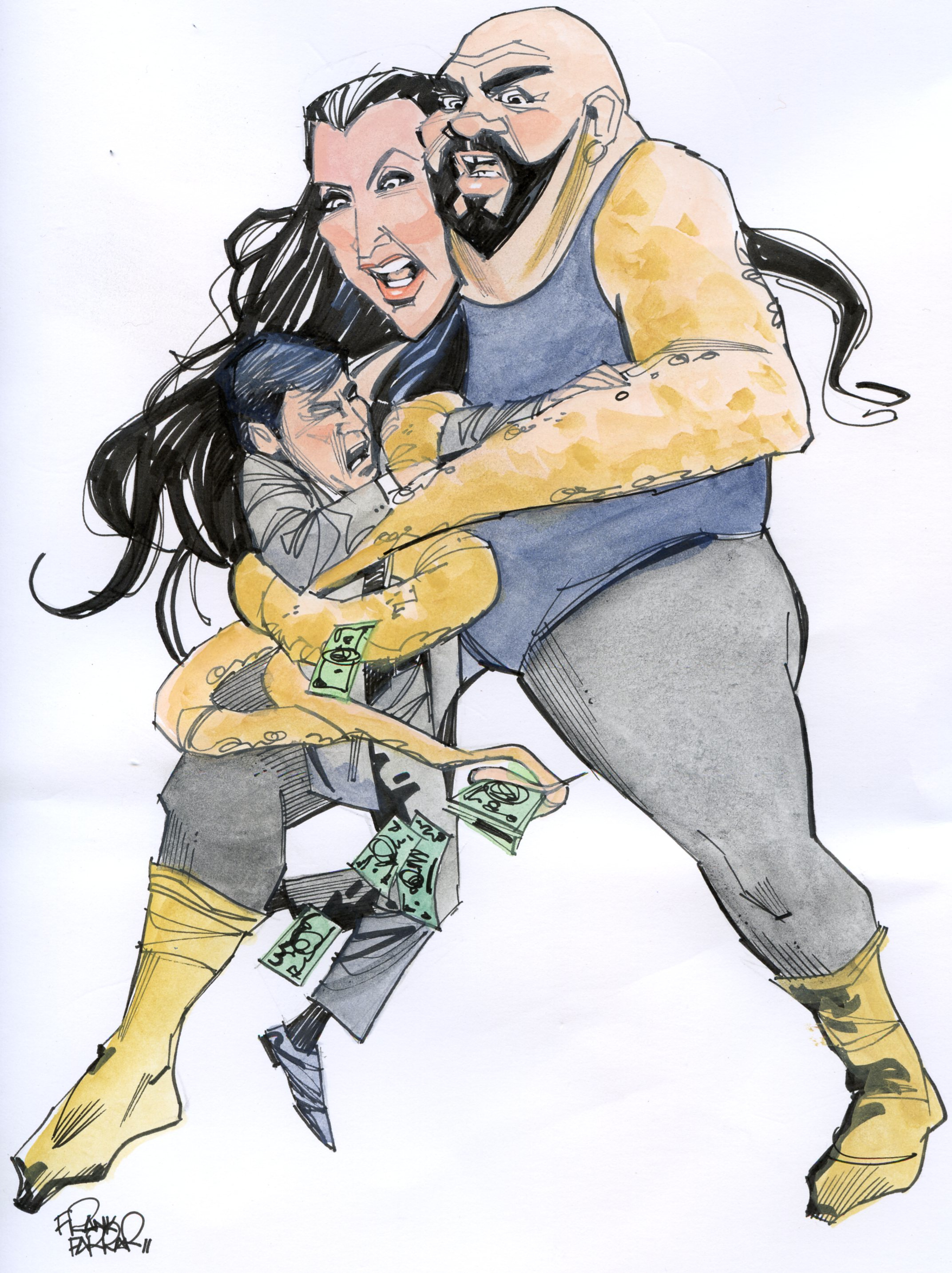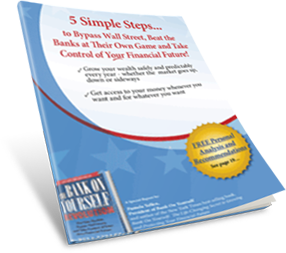Dank and fetid, the inner sanctums of SSH4TT (and no, it’s not what you think!) are devoid of natural light and fresh air.
Few are ever allowed to enter these unholy chambers. Those who do, disfigured and debauched by their own villainy, steer clear of mirrors and other reminders of their foul order.

In public, these odious creatures adorn themselves in gay masks and robes. They are lauded and paraded as paragons of perspicacity. Millions, yeah, tens of millions of innocents flock to the doorsteps of their opulent and cavernous estates – hoping to be swathed in the aura of their being – all the while stone-blind to the magnitude of their deception.

As a corrupt order, members of SSH4TT have a singular mission – and they pursue it mercilessly. Like vampires that require fresh blood to animate their dead carcasses, SSH4TTs lust after money – other people’s money – to fuel their insatiable rapacity.
SSH4TTs conduct their business, as they have for decades, free of a worthy adversary.
That was, until now…
Yes, it’s “SuperBOYs”… strange heroes, seemingly from another planet, who arrived on Earth in 2002 with powers and abilities far beyond those of most mortal bankers and brokers. SuperBOYs…who can change the course of financial rivers, bend retirement portfolios with their bare hands, and who, disguised as mild-mannered Authorized Bank on Yourself financial Advisors, fight a never-ending battle for truth, wealth, security and the American way.
Stay tuned for this and future episodes as SuperBOYs neutralize and defrock their most menacing adversaries ever, the mythical (yet very real) cabal, SSH4TT:
- Stocks
- Social Security
- Home Equity
- 401(k)s
- Tax Deferrals
- Term Life
Episode 1: Escape from the Orman-Ramsey Vise
In our first episode, “Escape From the Suze Orman-Dave Ramsey Vise,” SuperBOYs wrestle the trillion-dollar behemoth that is Term Life insurance.


As our story opens, we witness the plight of millions of honest, hard-working Americans, who have religiously paid their term life insurance premiums for decades, but are now trapped in the jaws of the dreaded Orman-Ramsey Vise – one of the original six SSH4TT financial evildoers who prey on the innocent and their nest eggs.
Get a glimpse at the other five founding SSH4TT members, who’ll be profiled in depth in the future:
- Octohussy – Queen of Wall And Broad
- Aunt Bizarro – Keeper of the Porous Lockbox
- Skyresh Detritus – High Admiral of the Corrupt Order
- Bokor – The Zombie King
- J. Wellington Wimpee – Shameless Bamboozler
The terrifying Orman-Ramsey Vise is a two-headed beast that lurks in the infested pits of mainstream financial television, radio and popular personal finance books. S/he beguiles people, causing them to put their full faith in term life insurance as the ‘wise’ choice in financial and investment planning.
Ah, but the winch has now entrapped them and the trance is broken. If the victims don’t die prematurely, they awaken in the gnarled, crushing grip of the Orman-Ramsey Vise.
Their only, Sophie’s-style choice?
Expose their loved ones to potential financial disaster in the event of their death; or continue to shovel larger and larger barrels-full of scarce cash into their term policies, which each year actually become worth less.

“Buy term and invest the difference my pretties,” croak Orman-Ramsey Vise in chorus – a warped smile of satisfaction spreading from ears to ears. “Buy term and invest the difference.”
Comic-book adventures aside, the bind that so many term-life policyholders now find themselves facing is quite real and very dramatic.
It wasn’t supposed to work out this way
Our family members, friends, colleagues – and perhaps even we ourselves – did exactly as instructed: “buy term insurance and invest the difference.”
The advice originated from many trusted sources, perhaps none however more prominent than media money prophets, Suze Orman and Dave Ramsey – who led so many of their unwitting flock into the jaws of this financial dilemma.
To understand the problem, first let’s review the theory promoted by Orman, Ramsey and the others who – even now – so strongly favor and promote the term life path.
When policyholders are young and healthy, term life costs relatively little to acquire and keep in force. We liken it to renting a home right after marriage rather than buying one – an analogy we will return to again shortly.

With term life, young and health policyholders can purchase hundreds of thousands of dollars of death benefits for less than $50 a month. This appears a wise and easy choice for young adults, who often are early in their careers, may be starting a family and may still have student loans to pay off.
Indeed, for young adults, low-cost term life policies purchase as much if not more death benefit for a lot less than the alternative, often referred to as permanent or cash value life insurance.
Orman and Ramsey hate all cash value life insurance products more than Superman hates krypton and they rarely miss an opportunity to say so.
Orman and Ramsey advise their followers to always buy term life and invest the savings (versus more expensive permanent life) in the stock market, where it can grow unfettered for decades. Ramsey tells his believers they “can expect to make 12%” annually on their investments.
Does anyone ever actually buy term insurance and invest the difference?
As an interesting aside, we’ve never met anyone who actually bought a term policy, checked around to get the cost of a permanent policy with the same death benefit, and then invested the difference in a mutual fund every month.
For most people, “buy term and invest the difference” translates into buy term and spend the difference. But let’s get back to the conventional wisdom about this…
In theory, by the time term policyholders reach their 50s and 60s, they’ll no longer need their policies because their investment portfolios will have ballooned to such a massive size that they will be wealthy enough to self-insure in the event of their death. In other words, they won’t need life insurance because their estate will be rich enough without it.
The term life theory is further bolstered by the expectation that by the time policyholders are nearing or in retirement, they will be empty-nesters, no longer having to look after the financial well being of their children, much less their elderly parents.
But brace yourself for the reality…
For millions of our friends, neighbors and family members, the world hasn’t turned out as Orman and Ramsey forecast.
![]() (Be a fly on the wall and watch Suze Orman and Dave Ramsey caught on video discussing Bank On Yourself, the subject of Pamela’s best-selling book.)
(Be a fly on the wall and watch Suze Orman and Dave Ramsey caught on video discussing Bank On Yourself, the subject of Pamela’s best-selling book.)
So many people who bought term life policies in their 20s and 30s are now in their 50s and 60s and — surprise! — their stock market portfolio never did grow at the annual 12% rate that Ramsey touts. In fact, many of these Orman-Ramsey devotees have yet to regain the dramatic losses they suffered during this year’s market plunge, the 2008 market crash, and even the 2000 dive before that.
S&P 500 suffers worst quarterly loss since 2008 – have you had enough?
Do you want to add guarantees and predictability to your financial plan? The Bank On Yourself method comes with more advantages and guarantees than any other method we know of. It’s an asset class that has never had a losing year in more than 160 years! If you haven’t already started to Bank On Yourself, today is the day to request your FREE Analysis and find out how to gain peace of mind and take back control of your financial future!
Their kids, generally, did move out to attend college and even enter the job market. But many of those adult children have moved back in with mom and dad, unable to support themselves and the high cost of living. And — bless them — grandma, granddad or both are often still alive and also need financial assistance.
Perhaps that’s one reason that a survey released in July 2011, conducted by Harris Interactive, found that Americans age 55 and older now intend to delay retirement by five years. And data from the Federal Reserve’s Survey of Consumer Finances indicates the typical pre-retiree has saved enough in their 401(k) to be able to withdraw only $260 a month!
They can’t afford to retire yet. And they certainly can’t afford to die…
For these aging baby boomers, the financial consequences should they perish haven’t changed much: If they were to drop dead today without insurance in place, many of them would leave their loved ones in the poor house.
“Oh, that’s okay,” you may be thinking, because they’ve been steadily paying term life premiums all these years — probably many tens of thousands of dollars worth — so they’re covered. Right?
Here is where the Orman-Ramsey theory gets a permanent divorce from the reality.
To explain, let’s return to my analogy above that buying term life insurance is akin to renting a home. No matter how many years or decades you’ve rented your home, you receive no credit for time-served if you can’t pay this month’s rent.
Rather than showing you the Road to Wealth, as Orman promises in her 2010 book, your landlord will show you the expressway to eviction.
It’s the very same concept with term life insurance. Stop paying your premium this month or this quarter and the term insurance company will cancel your coverage in 31 days. All those thousands of dollars you paid in over the years will buy you zero mercy.

Lest you think that this, too, is easily solved by just having term life holders continue to pay the $50-or-so a month required to maintain their policies, better think again.
The low monthly rates for term insurance applied only when policyholders were young and healthy. As they aged, their rates (rent) rose and ultimately became astronomical.
Moreover, because many of these term life policyholders are nearing or in retirement, they are no longer good candidates for fresh insurance of any variety. Some have developed health problems that preclude them from obtaining additional or replacement death benefits.
So for many of these responsible adults — men and women who year-in and year-out followed the advice they received — the choice now boils down to dropping their life insurance altogether, or paying a king’s ransom to renew the term insurance they already have.
What stings even more is the fact that when measuring in inflation-adjusted dollars, the term-life policies that they purchased decades ago are worth far less today. In fact, if inflation averages just 4% a year, a 20-year term policy will effectively lose more than half of its purchasing power.
In essence, aging term-life policyholders often pay way, way more than they used to for what may in effect be less than half the prospective death benefit coverage they originally sought.
Is there a better way?
For most people, the alternative insurance product that Orman and Ramsey so belittle actually proves to be a lot safer and smarter.

But the kind of dividend-paying whole life insurance policies described in Pamela’s bestselling book, Bank on Yourself, would have spared millions of Americans from the unpleasant consequences of the Orman-Ramsey Vise. These policies have little-known options added on to them that grow your cash value up to 40 times faster than the policies Orman and Ramsey describe, while slashing the agent’s commission by up to 70%. If you’re ready to find out how the Bank On Yourself method can give you the financial security and predictability you want and deserve, take the first step right now by requesting a free Bank On Yourself Analysis. You’ll also get a referral to one of only 200 advisors in the country who have met the rigorous requirements to be a Bank On Yourself Professional, who can answer your questions and show you how much your financial picture could improve when you add Bank On Yourself to your financial plan. They can show you ways to free up funds to start your plan, too. Bank on Yourself-compliant whole life policies are akin to homeownership — not rent. Yes, in their early years, they require more out-of-pocket cash than do term-life policies. Purchasing a home does cost more early on than simply renting it. But flash forward a decade or two and an entirely different scenario presents itself. Now these whole life policyholders have a great deal to show for their patience over the years. Because they own their policies, not just rent them, their rates don’t ratchet forward — ever. In fact, inflation works on behalf of whole life policyholders. Typically, the payments on these policies are made at a single fixed rate for a specified number of years, meaning that as policyholders age, they pay the exact same amount, only in inflation-diminished dollars. While the out-of-pocket costs of term policyholders soar with age, the out-of-pocket costs for whole life policyholders effectively shrink. Most whole life policyholders eventually reach the point where they no longer need to contribute any further premiums out of pocket to keep their insurance in force to age 100 or greater. The policy values can be used to cover them, or the policy can be converted into one that is fully “paid up,” with no more premiums due. The death benefits offered by Bank on Yourself-style whole life policies actually grow at an ever-increasing rate and can surpass those of fixed term-life policies over time. Most importantly, though, the money that whole life insurance holders have paid in over the years generates a cash value and is typically supplemented by annual dividends. By the time holders of these turbo-charged policies near or reach retirement, many of them have built an impressive nest egg, which they can draw upon as needed. It’s their money! And they most certainly don’t need to die to enjoy a healthy, secure return on their funds. Suze Orman, Dave Ramsey and others who share their term life superstitions are certainly popular and often entertaining. But on this subject, they are also dead wrong. It’s a lesson that too many of those who followed their advice now know all too well. And so the amazing SuperBOYs lead the way for our beleaguered brothers and sisters to extract themselves from the clutches of the Orman-Ramsey Vise. But think not that we’ve heard the final word from the mouths of this persuasive creature. S/he sniffs other unsuspecting souls, who even now are sitting down in front of their television sets and radios, prepared to drink in more of the Orman-Ramsey term life elixir. Armed with this graphic tale, it’s now your mission to prevent your loved ones and friends from ever finding themselves in the embrace of the Orman-Ramsey Vise. Warn them. Inform them. And if need be, call in the posse. Look, up in the sky. It’s a bird. It’s a plane. No, its SuperBOYs and they’re ready to fight for you, your loved ones and your American right – to get it right – when it comes to wealth formation. Are you ready to do something different?

That’s wealth creation with none of the volatility and risk associated with the stock market


LOL! This should scare a lot of people straight! 🙂 What a fun/scary/spooky article – great job Pamela!
Great Article
if people only knew the lies they are being told
thanks kindly
Kris
Well all I can say is I wish that this marvelous opp. would have come my way 20 yrs ago.
However, they say that the second best time to plant a tree is today…my today was 2 yrs ago. Thx to everyone who helped.
David
I agree with you about whole life insurance, and I don’t like the fact that Ramsey and Orman dispute the value of it. However, I do want to put out that maybe a combination of the messages would/could be appreciated. Dave and Susie to promote getting out of debt, and no matter how you spin it, their ideas are sound. Their investment advice is what we are disputing. If a person cannot control his/her debt/spending, it does not matter how well they invest. They can buy the BOY policy, but will most likely default on payment within a year if they do not control or maintain their money.
My advice:
Use Dave or Susy to get out of debt
then once you are ready for insurance and investments
Use BOY to start the nest egg.
Each persons circumstances are different. Some will be able to move a lot faster than others. However, if you already have a savings or 401k, don’t wait. Get your money in something that will make a difference in your life. Call a BOY adviser now.
You should be ashamed of yourself. You are trying to scare people out of their money. You would not be pushing this type of Life Insurance if it was not the most LUCRATIVE insurance for the agent/insurance company.
Rick, either you haven’t read anything about what a Bank On Yourself-type policy is… OR you’re a financial advisor who encourages your clients to put their money in your hands to manage their investments… or both.
As I have stated numerous times, an advisor who helps a client implement a Bank On Yourself-type policy has their commission SLASHED BY 50-70%!!
That’s one reason many people don’t know about it.
I blew your ridiculous argument out of the water last month with the blog post and podcast I did on “Busting the Bank On Yourself High Commission Myth.”
The most shocking revelation is how the advisor telling you to let them manage your investments and avoid the supposedly high commissions involved with whole life is actually making AT LEAST TEN TIMES MORE than the Bank On Yourself Advisor!!
Wake up and get a clue!
As Mark Twain noted…
Wow I second that, wake up and get a clue. Scare people out of their money? That’s what the big mutual fund companies are doing, invest for the long term, make sure you contribute to those 401k’s, yeah right. Pamela and a small group of others are teaching people how to maintain 100% liquidity, control, and use of their money while it is compounding. (True compound interest cannot exist in the markets due to fluctuation) It also continues to grow if you borrow from it as if you never touched it. So where is the scaring people out of money come in? I don’t follow. Oh, and if you need further clarification on what is really going on with your money in mutual funds, check out “The Battle for the Soul of Capitalism”, by John C. Bogle, founder of Vanguard Mutual Funds who explains in detail how the fund managers are taking 20 to 80% of our profits. When you are done you should apologize for your inane and embarrassing comments.
You make some excellent points, Bob. I haven’t read that book by John Bogle (I will now, though). I do highly recommend his book, Common Sense on Mutual Funds, which he fully updated last year.
If you invest in mutual funds, you’ll be shocked by what Bogle reveals. You’ll also learn how to avoid those pitfalls, if you feel that investing in the market still makes sense.
The reality is that no one should have more than a small percentage of their savings in the stock market if they want to avoid ending up like the average U.S. family with a head of household aged 60-70, that has only 25% of what it will need for retirement. (Source: Oct. 2011, AARP Bulletin)
Comical, but soooo true. I’m excited about my new quest of “not going with the flow!”
Thanks,
John